Hitler's trailers in Moscow
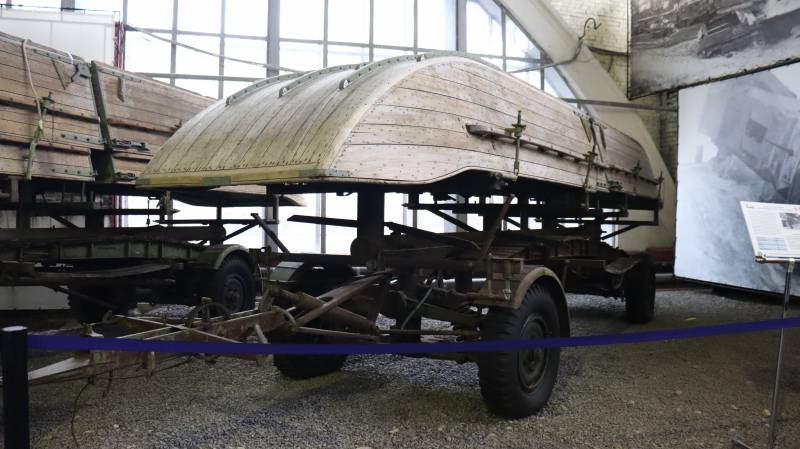
Leichter Pontonwagen (Pf. 15). German heavy wagon for four half-pontoons. Photo by the author
Boats with wheels
The exhibition “Motors of War” by Vyacheslav Len, on Rogozhsky Val in Moscow, is famous for its unique exhibits that are capable of independent movement. You can verify this at weekly dynamic displays, during which carefully restored examples of military equipment are rolled out across the museum’s courtyard. For example, last Tanker’s Day on Rogozhsky Val, five combat vehicles simultaneously demonstrated their driving performance - T-34-76, T-60, T-26, M3A3 and SU-76.
An equally important place in the exhibition is occupied by products that are not capable of independent movement. We are talking about horse-drawn vehicles, carts and trailers. The first two were discussed in the material "Hitler's Carts in Moscow". The time has come to talk about the Wehrmacht trailers stored in the “Motors of War” exhibition.

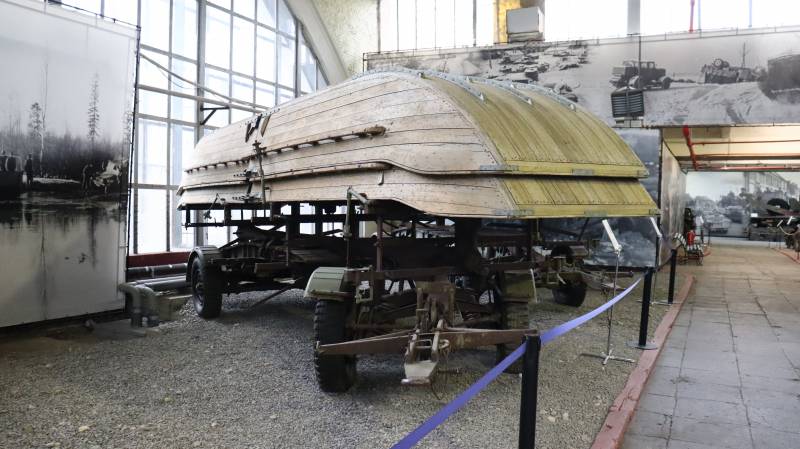

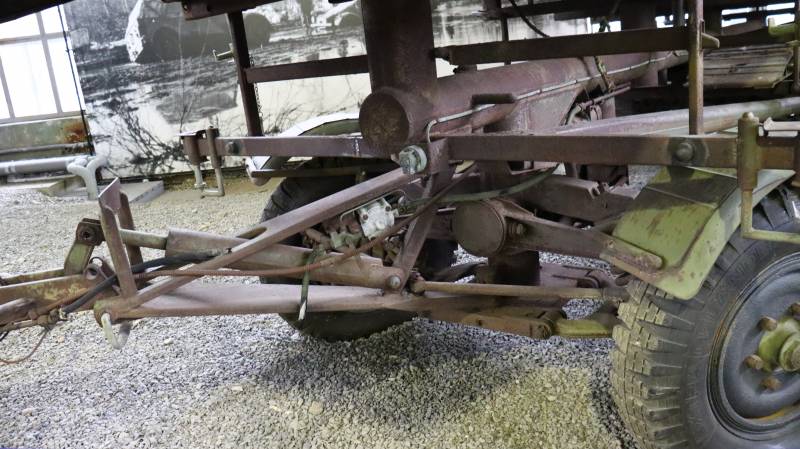

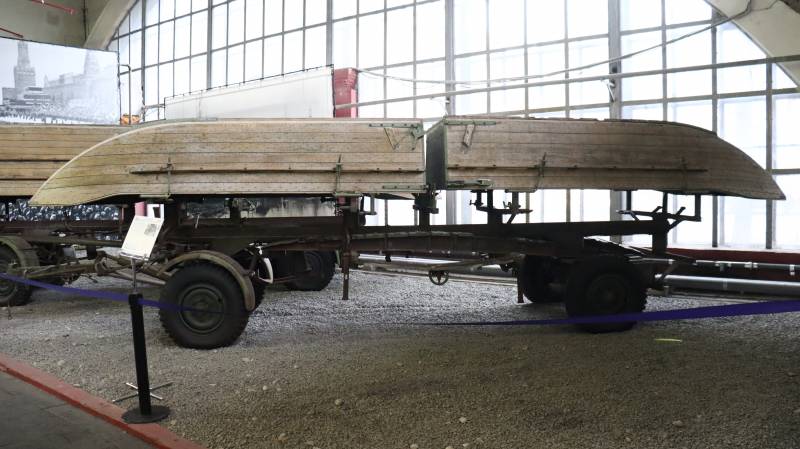
The “Motors of War” exhibition presents two examples of beautifully restored trailers from the Bruckengerat C pontoon fleet. Photo by the author
As has already been mentioned several times, the army of Nazi Germany was completely motorized only in feature films. In fact, the main driving force of the Wehrmacht was the horse. And they tried to load the existing cargo vehicles as much as possible, including by supplying them with trailers.
Truly unique exhibits of “Motors of War” are the Leichter Pontonwagen pontoon trailers (Pf. 15). A pair of healthy giants with four wheels and overturned boats greet museum guests near one of the far stained glass windows. The boats are actually half-pontoons that the Germans made from either wood or metal.
The exhibition features trailers from the Bruckengerat C pontoon fleet, which is a product of the evolution of Bruckengerat A. The park with index A was inherited by the Nazis from Kaiser Germany and was designed for horse-drawn transport.
It is clear that the concept of blitzkrieg, although it included a lot of horses, the poor animals were not able to carry multi-ton parkas. That's why the Bruckengerat C park with coupling devices appeared. Although the name of each pontoon contains “light”, everything is very relative - in field conditions, 4,7-ton trailers had to be hauled with a half-track tractor.
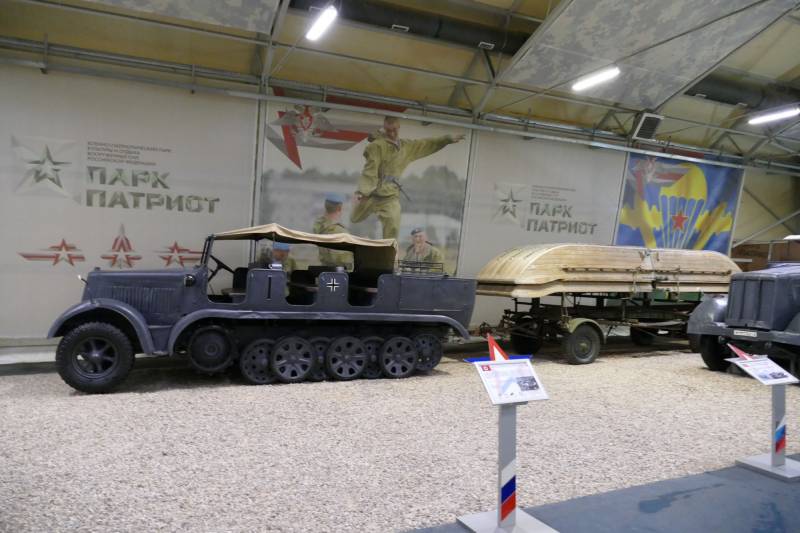
Although the trailer was considered formally light, it had to be towed by heavy equipment - in this photo, a half-track transporter Sd. Kfz. 7. Photo – Yuri Pasholok
For example, Sd. Kfz. 7. At one time, for greater authenticity in the Patriot park, a Leichter Pontonwagen was attached to just such a unit. But in the “Motors of War” exhibition, the products are devoid of towing vehicles.
In total, the Bruckengerat C fleet included twenty such semi-pontoon trailers and the same number of Leichter Bockwagen (Pf. 14). The latter were “light support vans” for transporting equipment for pontoon parks. Mainly with the help of Bruckengerat C, infantry and light equipment up to 6 tons overcame water obstacles. With the growing mass of Wehrmacht combat vehicles, light pontoon parks turned out to be unnecessary and by the middle of the war they almost disappeared. The samples on display date back to 1941.
Trailer for signalmen and more
The Wehrmacht lived luxuriously. And the trailer system once again proves this.
Next up is the Maschinensatz Sd heavy generator trailer. Ah. 24 samples of 1941. The full name is mind-blowing - schwerer Maschinensatz A als Anhänger (1 achs.) fahrbar. Maschinensatz A (Sd.Ah.24). The product was extremely useful in war, allowing the use of electricity of 220 or 380 volts with a current strength of up to 25 amperes.
The operators were usually either signalmen or engineering units of the Wehrmacht. The single-axle frame of the trailer housed a four-cylinder gasoline engine with a capacity of 16 hp. With. The curb weight of the unit reached two tons, which is why it had to be transported by heavy trucks. For example, the Krupp L3 Kfz radium van. 72. The highlight of the exhibit in “Motors of War” is its appearance untouched by restorers - the car is quite well preserved for its age.
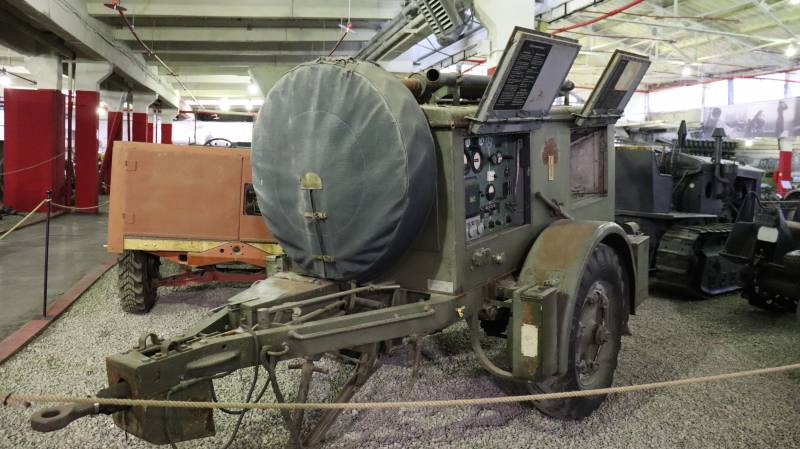


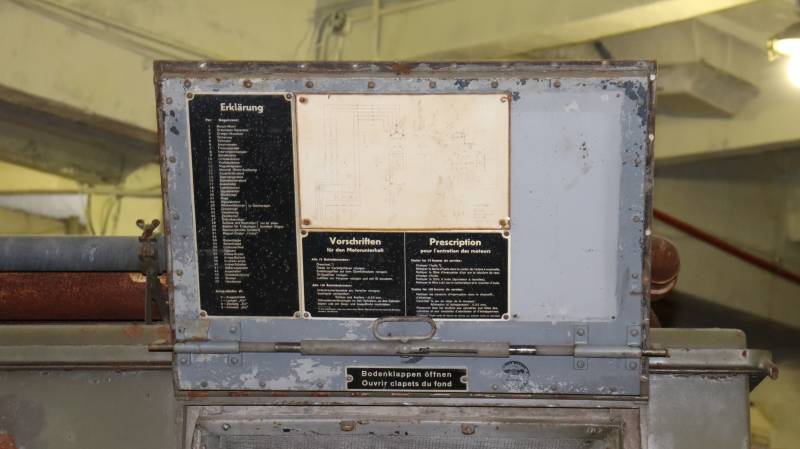
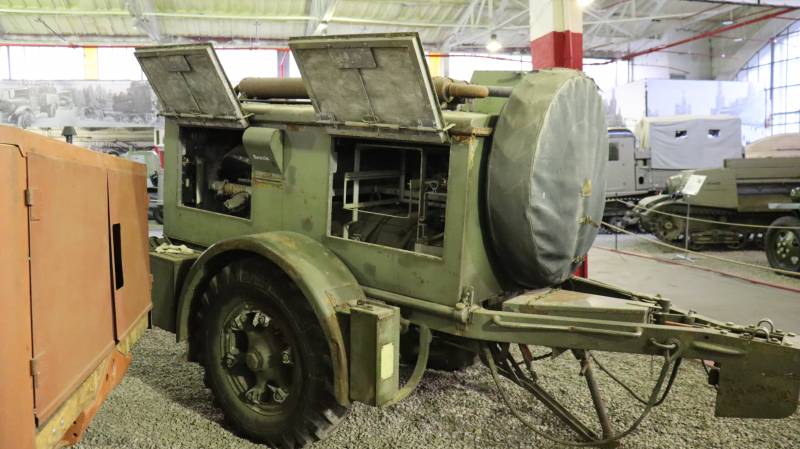
Heavy generator trailer Maschinensatz Sd. Ah. 24 samples of 1941. Photo by the author
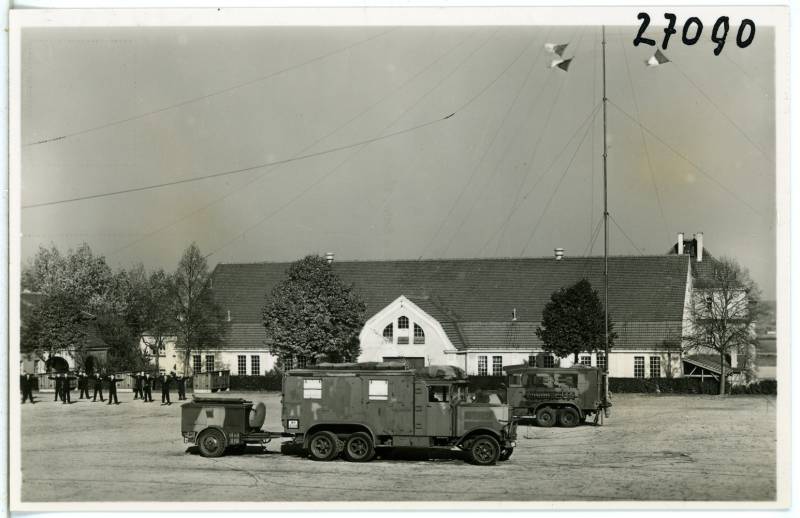
Archive photo with an example of towing a single-axle generator trailer with a Krupp L3 Kfz radio van. 72
In the summer of 2023, another fascist trailer was registered in the museum. This time a light Anhänger (1 achs) für Feldfernkabel for the needs of signalmen. It was intended to transport four drums with field cable, as well as a Verlegewagen laying trolley.
The cart was designed for one German human draft force and was based on bicycle wheels. At the same time, the trailer itself could be used to lay a telephone line - for this, the speed of movement was limited to 10 km/h and the drum was pulled out onto the outer frame. The trailer from the exhibition is the only one of its kind restored to museum condition and in the near future will receive the missing drums for the telephone cable.
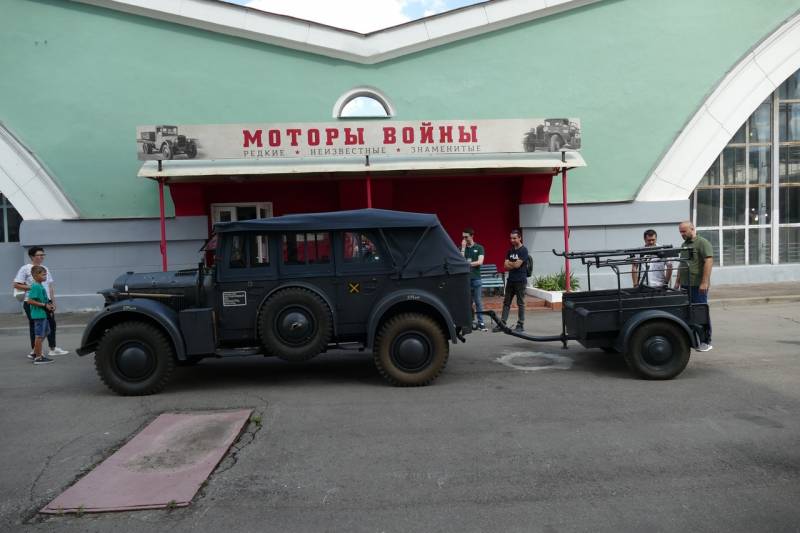
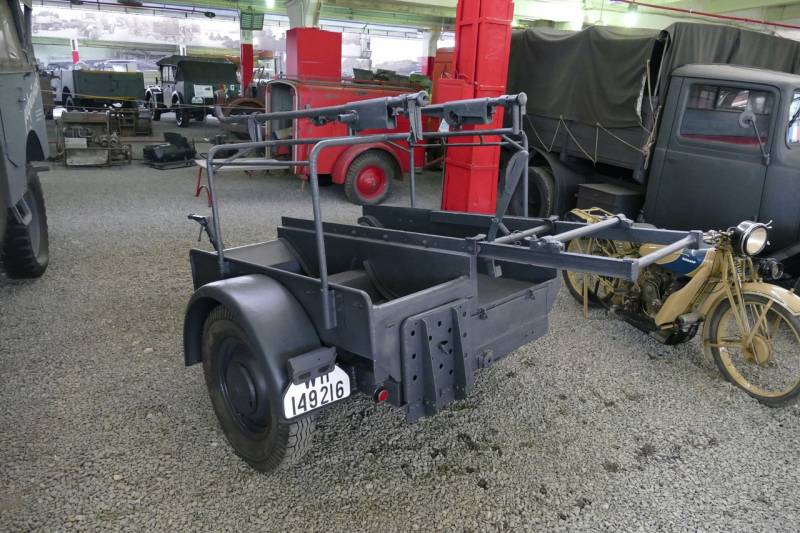
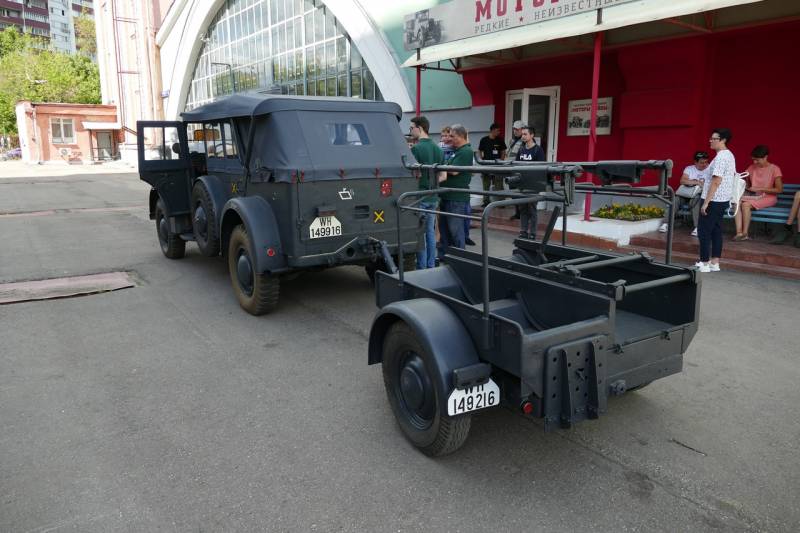
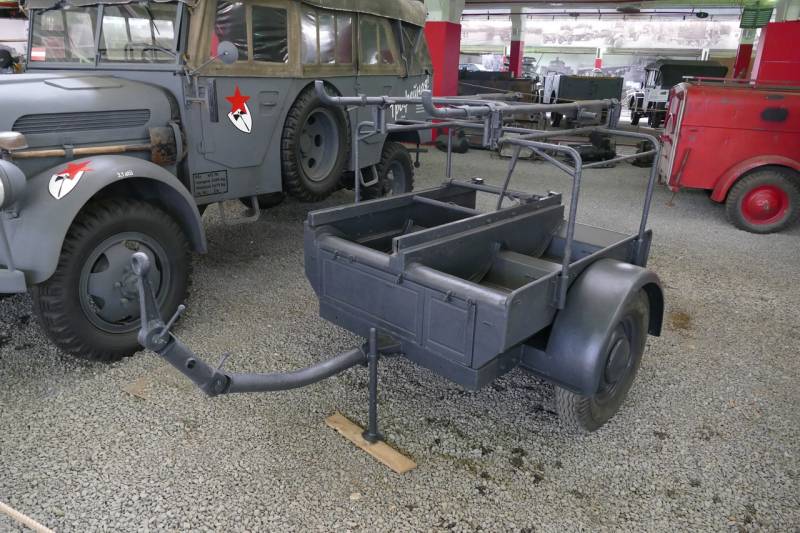
Anhänger (1 achs) für Feldfernkabel for signalmen after careful restoration. Photo – “Motors of War”
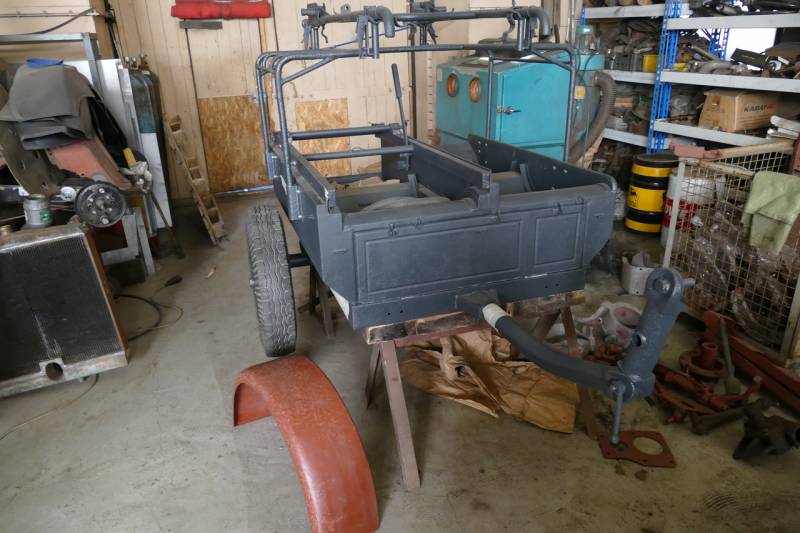
Trailer for Wehrmacht signalmen in the workshop of Vyacheslav Len

Munitionskasten auf Sonderanhänger 51 (Sd. Ah. 51) for transporting 20 mm shells to the anti-aircraft gun. Photo by the author
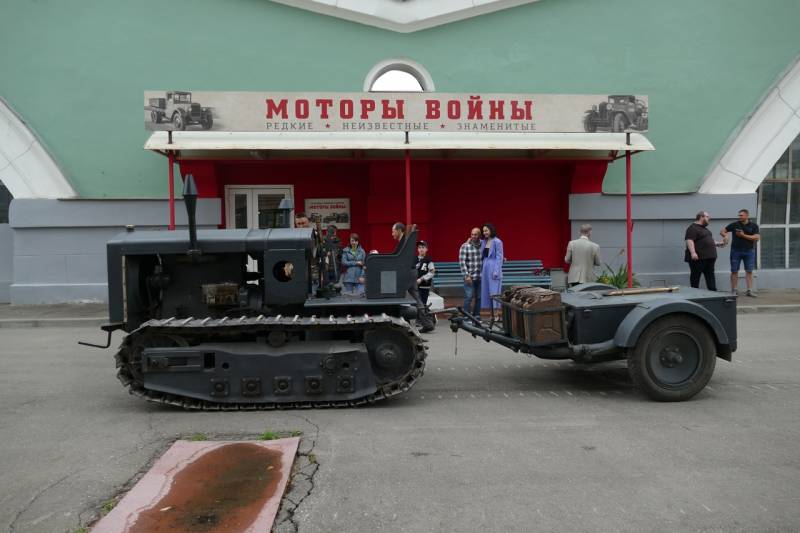
He's at the museum's dynamic display. Photo – “Motors of War”
The following trailer was used by the Germans to transport and store ammunition for the famous 20mm Flak 30 and 38 anti-aircraft guns.
The full name of the unit is 2 cm Munitionskasten auf Sonderanhänger 51 (Sd. Ah. 51), and as an additional load the cart could transport spare parts for the gun. Interestingly, with minor modifications it was possible to attach an anti-aircraft searchlight with a diameter of 60 cm to the frame of the trailer. According to official information from the museum, the trailer
History is formed in consciousness in fragments. Studying little-known episodes of the past war, including technical details, expands the picture of the world.
The modest but exclusive collection of German trailers at the Motors of War Museum provides insight into the technical culture of the time.
Information